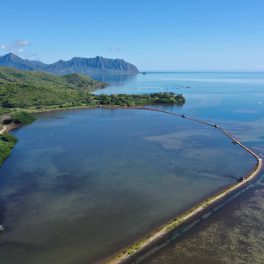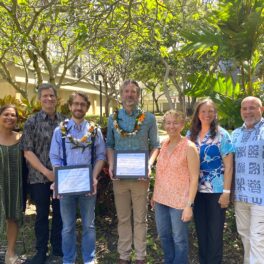UH developing diagnostic tool to improve Pacific Island forecasts
 Example figure illustrating the degree of match between observed (a) and modeled (b) rainfall patterns during an El Niño winter (Dec–Feb). Boxes enclose US-affiliated Pacific Island groups. Image courtesy of International Pacific Research Center (IPRC).
Example figure illustrating the degree of match between observed (a) and modeled (b) rainfall patterns during an El Niño winter (Dec–Feb). Boxes enclose US-affiliated Pacific Island groups. Image courtesy of International Pacific Research Center (IPRC).
The region known as the U.S.-affiliated Pacific Islands is no stranger to variable weather and climate. One of its dominant weather influencers is the El Niño-Southern Oscillation (ENSO), an alternating pattern of abnormally warm and cool ocean temperatures in the tropical Pacific. ENSO can cause drought-like conditions in the southwest Pacific that persist for 3–4 seasons, as well as frequent cyclones and storms.
Given the region’s regular bombardment of extreme events, U.S.-affiliated Pacific Islands decision-makers need accurate predictions from climate models. However, modeling errors can limit the reliability of forecasts.
Now, a researcher from the International Pacific Research Center (IPRC) is leading a project to identify those errors. Supported by a $508,000 grant from the NOAA Research Modeling, Analysis, Predictions and Projections (MAPP) Program, Senior Researcher H. Annamalai and his team will develop tools, known as diagnostics, to pinpoint where and how errors begin, to help scientists determine how to improve their models.
Read more about it in the UH System News and The Garden Island; see also the IPRC press release.




